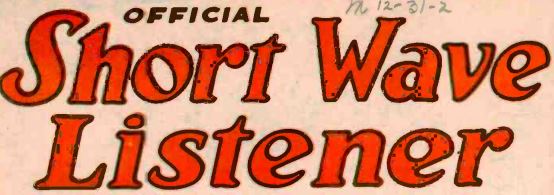Hello, I've been Frank SWL since the 1980s, and I've also been FØDUW, which is my amateur radio call sign.
One day in the 1990s, I too decided to listen to the amateur radio bands between 10 meters and 160 meters (1.8 MHz to 28 MHz).
At that time, I had a good KENWOOD R5000 receiver and a 20-meter cable on the roof of my apartment, which was 30 meters above the ground!
To identify amateur radio operators' call signs, I had a book-style guide with a list of all amateur radio countries. For amateur radio operators, these are DXCC entities, of which there are nearly 340.
In 2025, with a computer, a tablet, and the internet, or a smartphone, you can find free information to identify amateur radio operators' call signs and find out which country they are broadcasting from.
Since I had practiced DX on 27 MHz (11 meters) and listened to AM radios on medium and shortwave, I already had some experience. I also spoke a little English, which I had learned at school and later perfected as I traveled extensively.
In fact, radio amateurs use a universal language called Q code (like Quebec) and use the international alphabet, such as A = Alpha.
List of DXCC entities
https://www.f4hxn.fr/liste-des-prefixes-dxcc/
https://www.ng3k.com/Dxcc/dxcc.html
Propagation on HF band 3 to 28 MHz
https://icomjapan.blogspot.com/2023/07/the-most-simple-way-to-know-if-there-is.html
https://www.hamqsl.com/solar.html
Listening well depends on your receiver and antenna, but also on propagation.
We're lucky because in 2025, radio wave propagation is very good. This depends on the solar cycle, which lasts 11 years. When solar activity is strong, propagation is very good, but even at the lowest solar activity, there's still good DX to listen to (DX = long distance). Even in Europe, there are rare DXCCs to listen to, for example, on the 40-meter band.
Each band has its own characteristics. When solar activity is strong, it's easy to hear distant countries between 10 and 20 meters.
SSB (LSB) is used from 1.6 to 40 meters. USB (LSB) is used from 30 meters to 10 meters.
From 1800 kHz to 10150 kHz, DX is best after dark.
https://webkiwisdrswl.blogspot.com/2025/04/propagation-for-amateur-radio-operators.html?spref=bl
You can use WEB SDR or KIWI SDR from your computer and the internet.
What is SDR?
A Web SDR is a software-defined radio receiver connected to the internet, allowing multiple listeners to listen and tune to it simultaneously. SDR technology allows all listeners to tune independently and therefore listen to different signals; this contrasts with the many conventional receivers already available on the internet. There are several on every continent, including several in France.
My Favorite SDRs
http://rigi.dyndns-remote.com:8091/
http://websdr.ewi.utwente.nl:8901/
I also wrote several articles in English:
https://icomjapan.blogspot.com/2023/12/listen-world-for-free-on-your-computer.html
In 2025, something very important are DX clusters.
In the 1990s, it took me five years to confirm 250 DXCC entities with paper QSL cards. At that time, you had to search for DX! Unfortunately, following a move, QRM made me stop listening... I resumed listening on WEB SDR a few years ago, without QRM!
DX Clusters are the easy solution for quickly listening to many DXCC entities.
My favorite cluster is this one: http://www.dxsummit.fi/#/
On this cluster, clicking on the DX call sign takes you to QRZ.COM, which provides information about that station.
My call sign, FØDUW, for example, is https://www.qrz.com/db/F0DUW
There's even a very useful atlas for locating DX stations.
A great free book in English and in PDF format to help you understand DX
To listen SSB mode you can buy a second hand radio receiver or a cheap price radio with SSB



.jpg)

